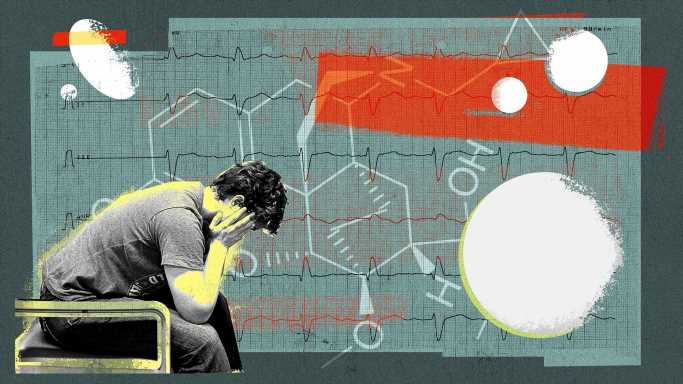
Illustration: Shoshana Gordon/Axios
The overdose crisis is prompting more hospitals to initiate opioid addiction treatment in emergency rooms — a change welcomed by many behavioral health experts.
Yes, but: It's resurfacing tension among providers over who's really responsible for addressing the underlying problem of opioid misuse.
Why it matters: Discharged patients are customarily referred to substance use programs in communities. Addiction experts say administering a drug to treat dependence like buprenorphine in a hospital can dramatically reduce the odds of a patient relapsing and provide a critical intervention.
- But it’s still more common for the burden to be placed on patients to "go and figure it out themselves," said Alister Martin, an emergency physician and founder of Get Waivered, a campaign pushing for more emergency departments to provide buprenorphine.
- Less than 10% of nearly 150,000 drug-related emergency visits resulted in a buprenorphine prescription between August 2019 and April 2021, per a University of Michigan study.
- In 2021 — nearly 20 years after the FDA approved buprenorphine — only 1 in 9 providers were licensed to prescribe it.
What's happening: The year-end congressional spending package eliminated a requirement that clinicians undergo special training and register to prescribe buprenorphine — a factor doctors often cited as a barrier to offering treatment.
- But some ER doctors "just don't consider it part of their job" and view addiction as a "moral failing" instead of a medical illness, said Eric Weintraub, a psychiatrist who leads the University of Maryland’s Division of Addiction Treatment and Research.
- Some also don't want emergency departments — high-volume businesses with high fixed costs — to be de facto substance use clinics treating a large number of uninsured or Medicaid patients.
State of play: The scope of the opioid crisis has prompted more states to make addiction treatment in ERs an option.
- Massachusetts became the first state in 2018 to legislate that hospitals with EDs offer opioid use disorder treatment.
- A Pennsylvania program has since used state funding to incorporate addiction treatment into emergency care for opioid use disorder.
- Emergency physicians founded CA Bridge, a nonprofit launched in 2018 to expand buprenorphine treatment in California's EDs.
- Indiana's legislature introduced a bill this year that would require emergency departments to evaluate their ability to initiate medication-assisted treatment and connect patients to programs.
Zoom in: Starting treatment in an ER tests a community's continuum of care.
- The concern for providers is, "What if I initiate this medication but the patient doesn't have anywhere to go and we don’t have resources in our community?" said Marla Oros, president of the Mosaic Group, which has helped more than 70 hospitals integrate buprenorphine treatment training and protocols.
- Scott Weiner, an ER physician at Brigham and Women's Hospital, told Axios that hospitals can coordinate with local treatment centers or establish relationships with treatment providers to make referrals if they can't establish their own bridge clinic in-house like his facility.
- Those connections are not always a given and referrals are only as good as the providers offering treatment in the community, Weiner said.
Nearly 60% of emergency doctors said addiction treatment facilities outside of the ER were "rare or never accessible," in a 2017 survey from the American College of Emergency Physicians.
- Edward Ratush, a New York psychiatrist specializing in addiction medicine, told Axios that he’s had pregnant patients with opioid use disorder struggle to find providers willing to continue their treatment.
- Drug distributors also sometimes set quotas on buprenorphine since it’s an opioid, which can limit the amounts that pharmacies stock even if ER physicians want to prescribe it, said Jeffrey Davis, director of regulatory affairs at the American College of Emergency Physicians.
The bottom line: These aren't good enough excuses to not do better, ER physician Weiner said.
- "The emergency department is the safety net, and we have to step up because we're just losing too many people."
Source: Read Full Article
